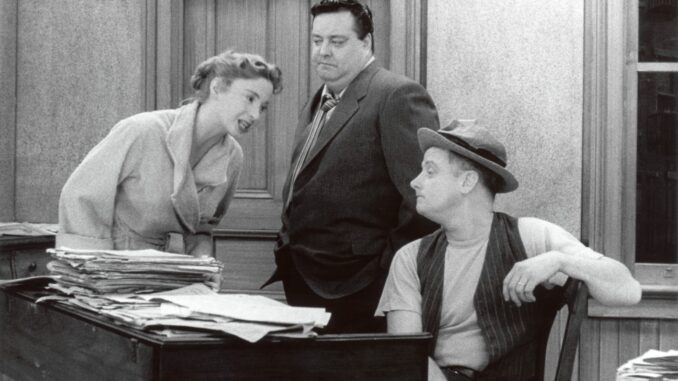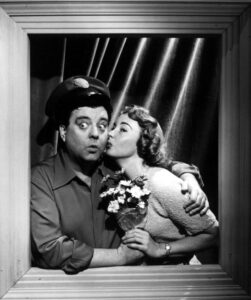
When we think of classic sitcoms
The Honeymooners often comes to mind as a pioneering show that laid the groundwork for countless family comedies to follow. However, revisiting its debut episode reveals a startling portrait of 1950s domestic life that feels less like comedy and more like a grim drama.

Strip away the laugh track
What remains is a scene that could have been plucked straight from a Tennessee Williams play — a married couple locked in bitter conflict, their words laced with venom and threats. The intensity of their argument escalates to a point where Alice, the wife, threatens to jump out of the window. It’s a moment that, without the cue to laugh, leaves viewers stunned and uncomfortable.
What’s particularly unsettling is how the episode mirrors the cycle of abuse often seen in toxic relationships.
Ralph, the husband, displays classic signs of an abusive partner — quick to anger, making threats, and then switching to remorse and attempts at reconciliation. His offer to take Alice out to dinner after their explosive fight is a textbook example of the “honeymoon phase” in the cycle of abuse, where the abuser tries to make amends, only for the cycle to begin anew.
The show’s format — performed live without retakes — adds an extra layer of rawness to these interactions. There’s no softening of the blows, no careful editing to smooth out the rough edges. What we see is a stark, unfiltered glimpse into a relationship that, by today’s standards, would be considered deeply dysfunctional.
The Honeymooners was a product of its time.
Reflecting post-World War II America where many were dealing with undiagnosed PTSD and the lingering effects of the Great Depression. The show’s creator, Jackie Gleason, drew from his own childhood experiences to craft these characters and situations.
